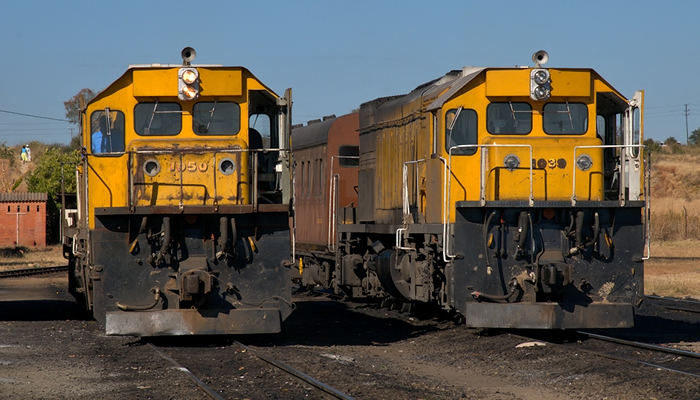By Farayi Machamire
Thirteen pedestrians plunged to their deaths by jumping in front of moving trains in the first five months of the year. The figure is more than half of what was recorded in the whole of last year, giving a scary picture of what could be lying ahead.

Official figures obtained from the National Railways of Zimbabwe (NRZ) show that five months into the current year, the railway carrier has already recorded 13 fatalities and seven injured.
Vehicle collisions at level crossings have also taken a big jump from one fatality in 2017 to five deaths in 2018.
Last year, the number of people hit by its locomotives or alternatively committed suicide by jumping in front of its trains stood at 23 fatalities and 11 injured.
The spike in fatal car crashes involving trains has jolted the NRZ into doubling its efforts in raising awareness about the need for drivers to make smarter decisions at railroad crossings.
Put simply, the parastatal is encouraging drivers to always stop for approaching trains and that pedestrians should desist from using commuter train lines as a platform to commit suicide.
Concurrent to these efforts, the NRZ is also carrying out various campaigns that make people aware of the rail road level crossing signage.
The campaign also focuses on dissuading from vandalising rail infrastructure and gold panning along railway lines.
This comes as four people died, while 10 others were injured when a Toyota Hiace commuter omnibus they were travelling in was hit by a goods train at a railway level crossing near Windsor Park turn-off in Ruwa, just outside Harare, on April 24.
Investigations showed that the Toyota Hiace, which was being driven by a 33-year-old man along Sansauce Road with 16 passengers on board, was impatient, and tried to force his way through while all cars were stationary.
In Makokoba, in the second city of Bulawayo, a Honda Fit overtook cars that were stationary, resulting in a collision with a train.
And just recently, two people were reportedly injured when a pirate taxi they were travelling in was hit by a goods train after failing to stop at a railway crossing point in Gweru.
The NRZ has itself come under fire for operating dilapidated infrastructure.
Its centralised train control system which is used to monitor the trains’ movement has since collapsed.
The parastatal has not had any meaningful injection of capital over the last 25 years.
It was only recently that it leased 13 locomotives, 200 wagons and seven locomotives from South African rail utility, Transnet, as a stop-gap measure under an agreement with the Diaspora Investment Development Group/Transnet Consortium.
It is estimated that NRZ requires about $2 billion to turn around its fortunes, but the $400 million would help reposition the parastatal for self-sustenance.
NRZ public relations manager Nyasha Maravanyika described the issue as “two-pronged”.
He said because of the vandalism that was taking place, the stealing of copper wires, of motors on the rails and signal equipment, they were no longer running electric trains because of the vandalism.
“You will also note that the reason we are recapitalising is that we are overhauling our information equipment, in reality some of our infrastructure is not up to scratch and here and there it may contribute to the accidents,” said Maravanyika.
“But you will also note that all our trains are equipped with a horn which, according to the make of our track, it automatically sounds at designated areas, some metres away from the rail level crossing but drivers are not paying heed.”
Maravanyika said the public needed to have a sense of community ownership and to bear in mind that railway infrastructure belongs to the State and that it is everyone’s responsibility to protect it.
“Our lines have always been functioning, they have boom gates and lights, but there are incidences where drivers don’t pay heed to the rail line level crossing signage, it’s only buses and trucks that are observing (the signage,” he said.
“Motorists need to play their part. The big lorries are observing level crossing signage but the private cars are not. Signals are there and they are very clear, stop and give way to the train, you will never win.
“The other issue is that the public is now using our tracks as a suicidal podium. They go to areas where they are no signals, where there are curves and they throw themselves into the moving train. It’s difficult for our engine man to sound the horn. It’s very sad to lose lives,” added Maravanyika.
The NRZ is therefore appealing to people to seek professional help if they have issues affecting them. Daily News






